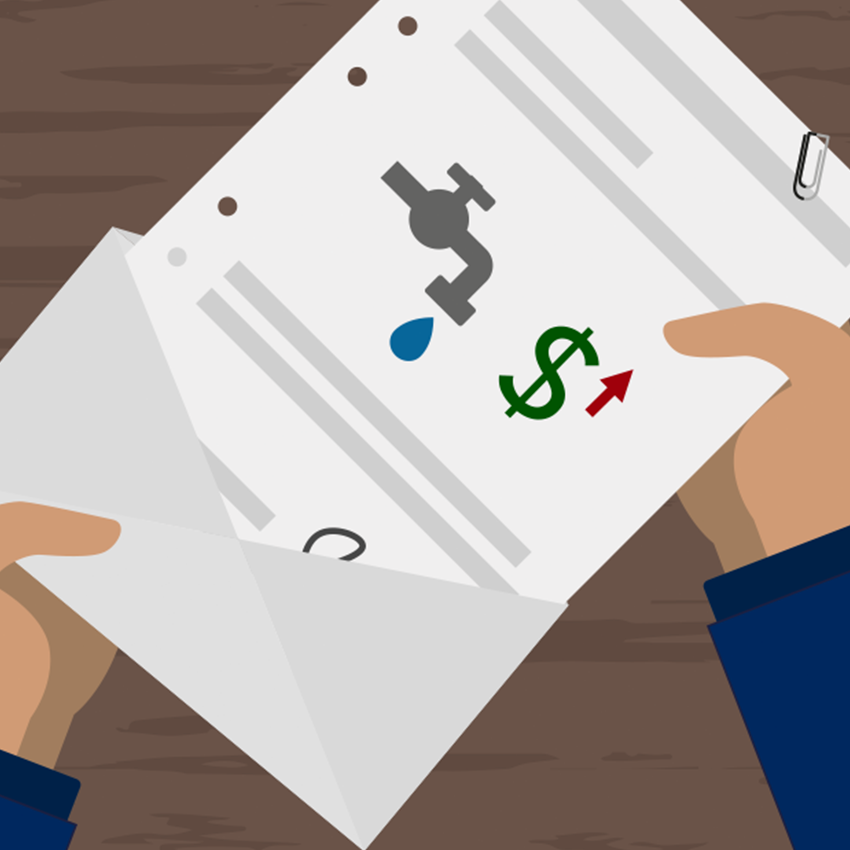If you’re a property owner or manager, you’re likely accustomed to receiving a billing statement from your water provider every one to three months. Knowing how to read a water bill can serve as a great resource when it comes to saving money; unfortunately, reading and analyzing the information provided isn’t always easy. With this in mind, we’ve created the following guide to teach you how to read a water bill and boost savings on your property. To start, let’s review the most pertinent pieces of information that you’ll encounter on your water bill:
Total Amount Due
The amount due on your billing statement is exactly as it sounds: the total amount of money you owe to your water provider for their services.
Although “Total Amount Due” is relatively straightforward, the charges involved are a different story. Let’s take a look:
Water
Commonly measured in 1,000 gallon increments, the water charge is based on the amount of water pumped into your property from the water provider. So every time you run the irrigation system, fill a pool or power wash the parking lot, you pay a rate set by your water provider. In the water bill below, water charges are highlighted blue.
Sewer
Resulting from various water-based activities like flushing toilets, laundry and sanitation, the sewer charge is based on the amount of water pumped away from your property by the water provider. Depending on your property type and size, you can expect either a flat rate removal fee or rate per 1,000 gallons of water removed. In the water bill above, sewer charges are highlighted in green.
Additional Fees
Additional fees vary based on water provider and can be labeled in a wide variety of ways. These fees are often put in place to cover the costs of maintaining the sewer system and water treatment plants. In the water bill above, additional fees are marked with a red dot.
Water Usage Chart
Just like your monthly electric bill, your water bill may provide you with a chart that illustrates your property’s historical usage by month. If a chart of your water habits is provided, do you notice any months in which you had a spike in water consumption? Or has it remained high following a specific month? These types of spikes in your water bill can be indicative of leaks, which can become a property owner’s worst nightmare if not addressed. If you see a rise in your water consumption that doesn’t correlate with new tenants moving in or seasonal landscaping needs, you may be dealing with a leak.
Real Time Water Monitoring and Leak Detection
Understanding how to read a water bill is the first step to achieving considerable savings, but you can take it one step further by implementing a smart water flow monitoring system like WaterSignal. Using our non-invasive device, you can detect leaks in real time using custom alert levels and remotely keep tabs on your water usage from any internet-enabled device.
For more information about WaterSignal, contact us today!




